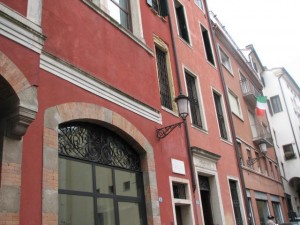CULTURE A New Museum for Jewish Padua
A new museum of the Jewish community of Padua will open simultaneously with Expo 2015. The exhibition will focus on the history and the present of Judaism in the city of northeastern Italy.
Three elements inspired the creation of the museum: First of all the great cultural heritage of the Jewish community, as well as its rich history. “At one time our Jewish heritage had been kept hidden, but in the last years the atmosphere has changed and exhibitions started being held to spread the knowledge about Judaism and to fight ignorance,” said Davide Jacur, president of the Padua Jewish Community and board member of the Union of Italian Jewish Communities. “Moreover, the Florence based Israeli architect David Palterer opened my eyes to today’s concept of dynamic museums. I began to be more and more excited about the idea,” he added.
The museum will be housed in the building of the old German Synagogue in the heart of the ghetto of the city. The Jewish Community of Padua renovated it at the end of the 1990’s and began using it as a conference room. The building dates back to the 1500s and for five hundred years it was the center of Jewish life in the city. Its lower part was completely destroyed and then its ornaments had been dispersed.
The remains of the original architecture of the German Synagogue will be used as a base for one of the two parts of the museum, which will be modern and hi-tech. “Five-meter tall video screens will project the architectural traces of the matroneum,” explained the historian Gadi Luzzatto Voghera, one of the coordinators for the new museum. “The videos will feature the biographies of some eminent Paduan Jews. This is very important for the history of Judaism worldwide”, he added. Among them are the philosopher Don Itzhak Abrabanel, Yehudà Mintz and his son Avraham Mintz who were founders of Padua’s Yeshivah. There was Moshé Chayim Luzzatto, better known with the acronym Ramchal and Shemuel David Luzzatto who in 1829 founded the Italian Rabbinical College.
The second part of the museum, as explained by Luzzatto Voghera, will display the many and precious ritual objects preserved by the Jewish Community of Padua. Among the most impressive is an illuminated and decorated Meghillat Esther manuscript; a Mamluk carpet that has travelled around the world as a loan to exhibitions, an unusual wooden calendar box used to count the days of the Omer and a collection of about 40 sepharim.

